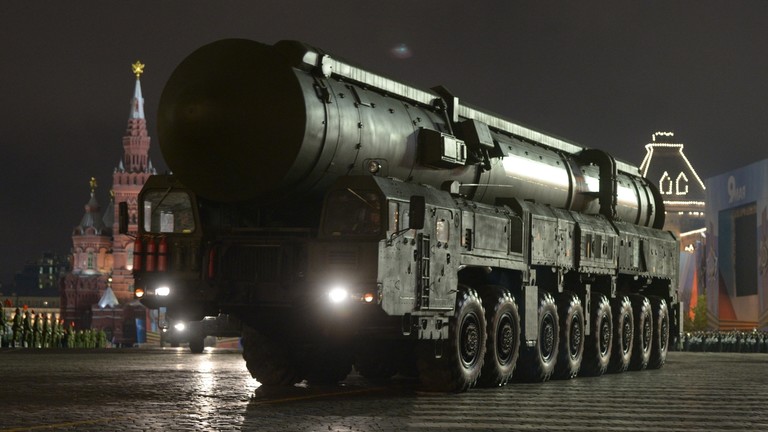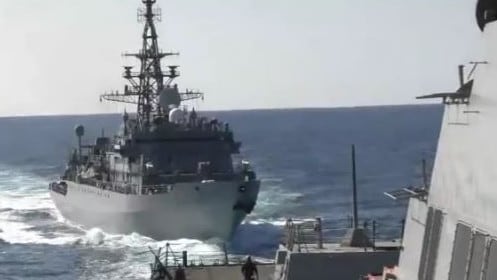
This article is more than
5 year oldRussian warship‘s aggressive move

A US Navy destroyer was “aggressively approached” by a Russian ship in the North Arabian Sea yesterday, officials told UK publication the Sun.
The Russian Navy ship was dangerously close to the USS Farragut before the American ship “sounded five short blasts,” the Navy’s 5th Fleet announced today.
The blasts are the international maritime signal for when ships are in danger of colliding.
The Farragut “requested the Russian ship alter course in accordance with international rules of the road,” Naval officials said in a statement.

Picture: U.S. Naval Forces Central Command/5th Fleet.Source:The Sun

Picture: U.S. Naval Forces Central Command/5th FleetSource:The Sun
The Russian warship “initially refused but ultimately altered course and the two ships opened distance from one another.”
The 5th Fleet said Russia’s “initial delay in complying with international rules while it was making an aggressive approach increased the risk of collision” between the two ships.
“The US Navy continues to remain vigilant and is trained to act in a professional manner,” the statement read.
The USS Farragut, an Arleigh Burke-class destroyer, was in the Arabian Sea “conducting routine operations.”
Farragut sounded five short blasts, the international maritime signal for danger of a collision, and requested the Russian ship alter course in accordance with international rules of the road. pic.twitter.com/OGCeAGKOy3
— U.S. 5th Fleet (@US5thFleet) January 10, 2020
A Navy official told CNN the Farragut “is part of the USS Harry S. Truman aircraft carrier group and the Farragut is tasked with intercepting potential enemy ships.”
The Farragut ship is “tasked with intercepting potential enemy ships to prevent them from approaching the aircraft carrier.”
Additionally, two defence officials said the Russian ship got as close as 180 feet from the Farragut.
The officials told the news outlet there was “bridge-to-bridge communications between the two warships.”

Picture: U.S. Naval Forces Central Command/5th Fleet.Source:The Sun

Picture: U.S. Naval Forces Central Command/5th Fleet.Source:The Sun

Picture: U.S. Naval Forces Central Command/5th Fleet.Source:The Sun
The incident is the latest in a string of increased encounters between US and Russian warships.
In June, the USS Chancellorsville and a Russian destroyer came within 165 feet of each other in the Philippine Sea.
The U.S. 7th Fleet said the Russian destroyer put the safety of the U.S. ship and its crew at risk, as it was forced to reverse all engines at full throttle to avoid collision.
No one was injured in the incident and the ships ultimately never came into contact.
The 7th Fleet at the time said it considered “Russia’s actions during this interaction as unsafe and unprofessional.”
Additionally, officials said such actions were “not in accordance with the International Regulations for Preventing Collisions at Sea (COLREGS), ‘Rules of the Road,’ and internationally recognised maritime customs.”
This article originally appeared on The Sun and was reproduced with permission




